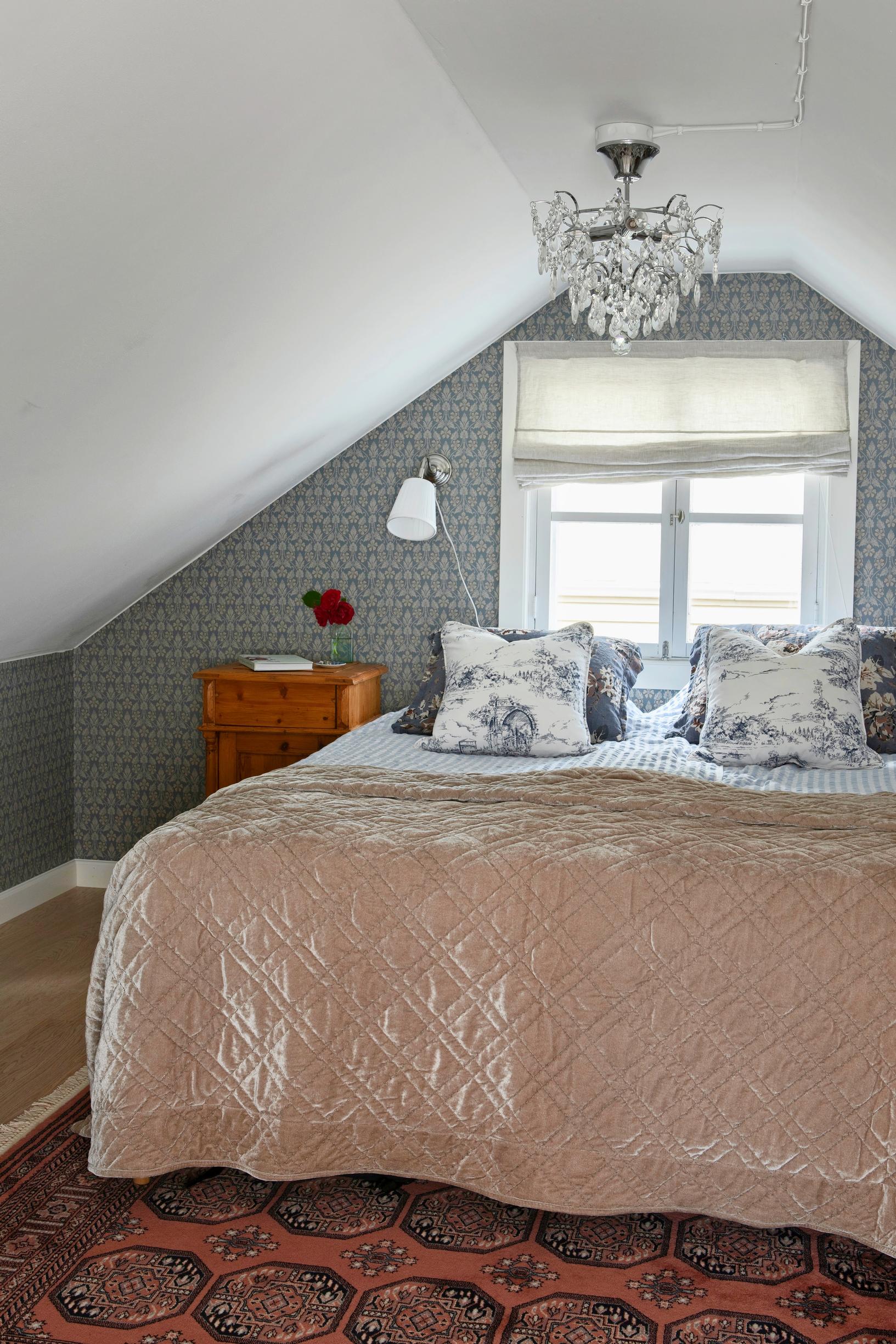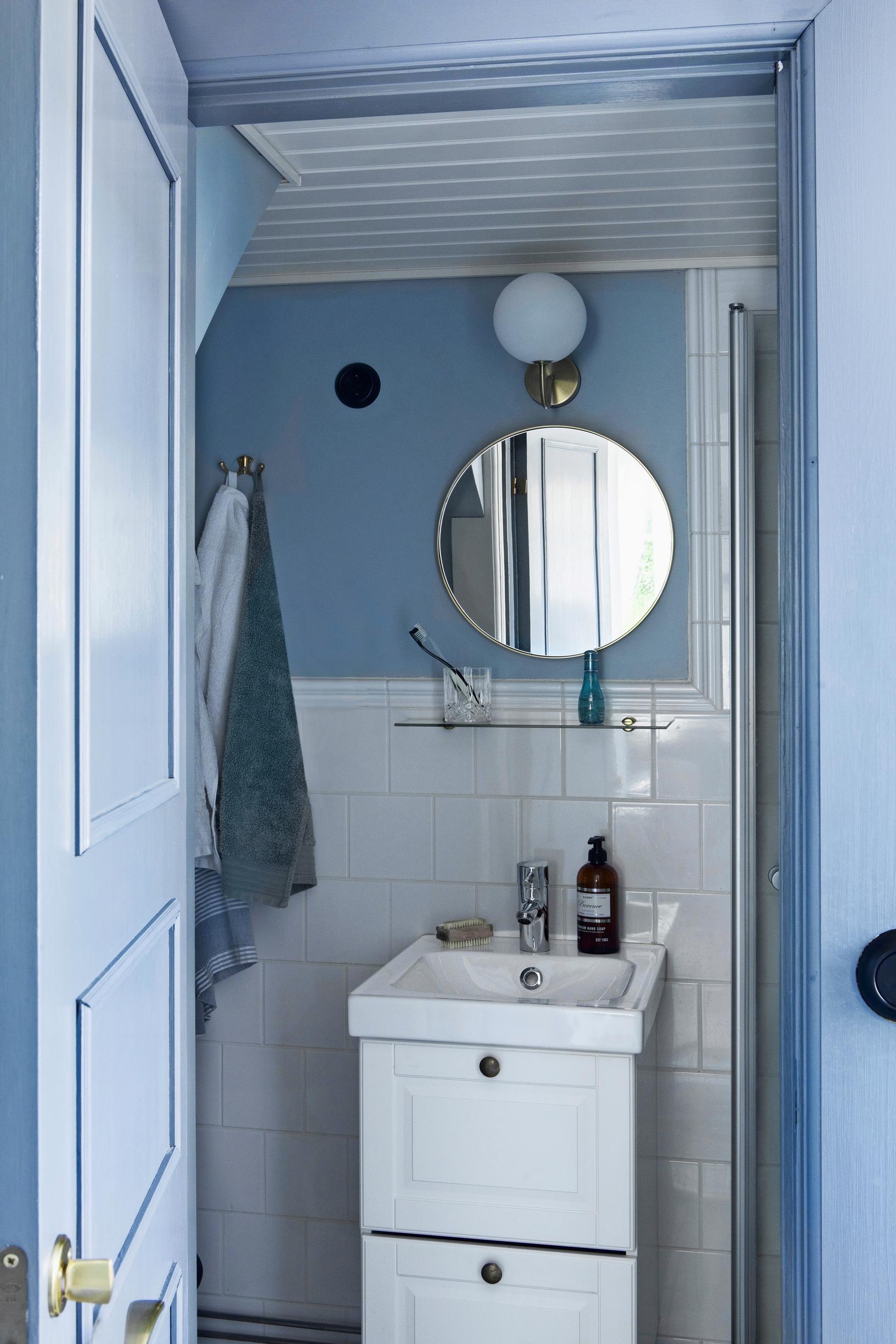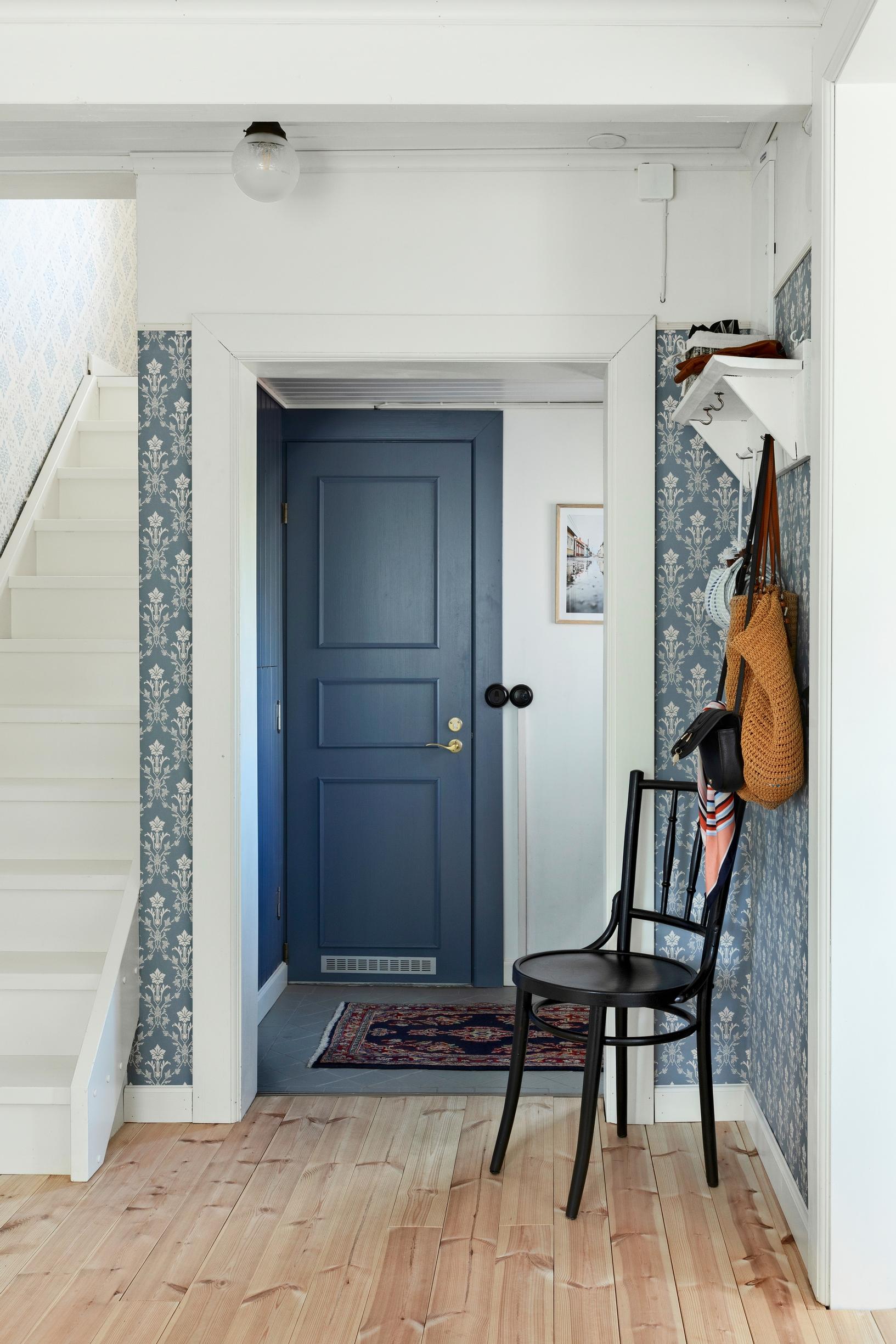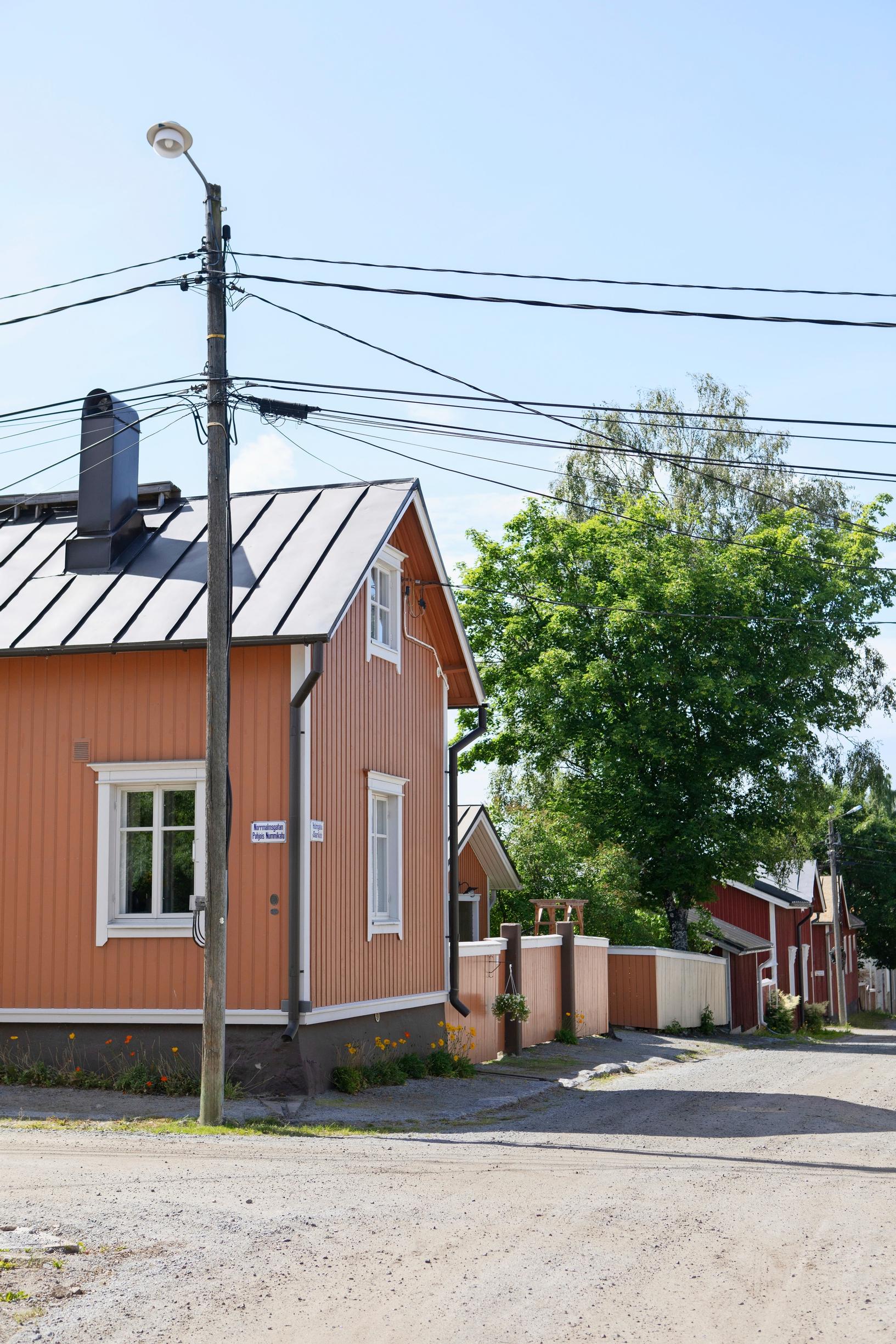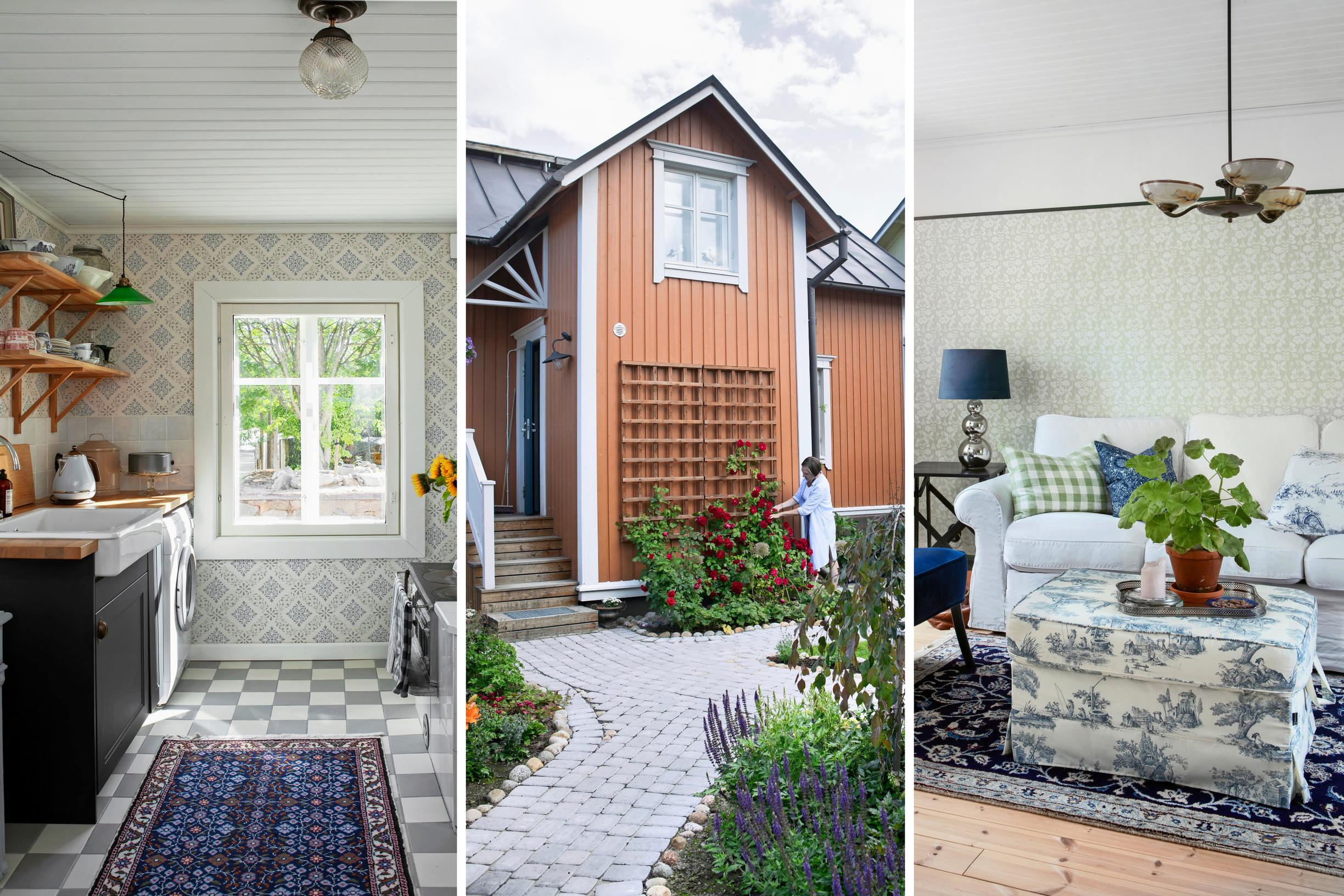
Two sets of stairs and eight layers of flooring: inside Mia and Björn’s surprising log house renovation
Mia and Björn enjoy city-style cabin living in their small log house in the heart of Pietarsaari’s old wooden district on the west coast of Finland. “We’ve always had a love for old houses, even though we’re not exactly handy ourselves.”
The house felt like a labyrinth. Mia and Björn Brännbacka marveled at the downstairs of the 1920s log house. How could a 50-square-meter (538 sq ft) house be so maze-like? Why was there a hallway in the middle of it? The family had been looking for a second home for a few years. With their last child about to move out, they could now work remotely from anywhere. For the Brännbackas, a log house in the heart of Pietarsaari’s Skata district seemed perfect, but after finding that maze-like hallway to the yard, Mia wasn’t convinced.
Home: A log house built in 1920 in Pietarsaari, Finland. 2 rooms + kitchen + bathroom + entry + attic with 2 bedrooms, 50 m² (538 sq ft) plus 15 m² (161 sq ft) in the attic.
Living here: Mia and Björn Brännbacka along with their three adult children.
Follow on social media: @mia_bra
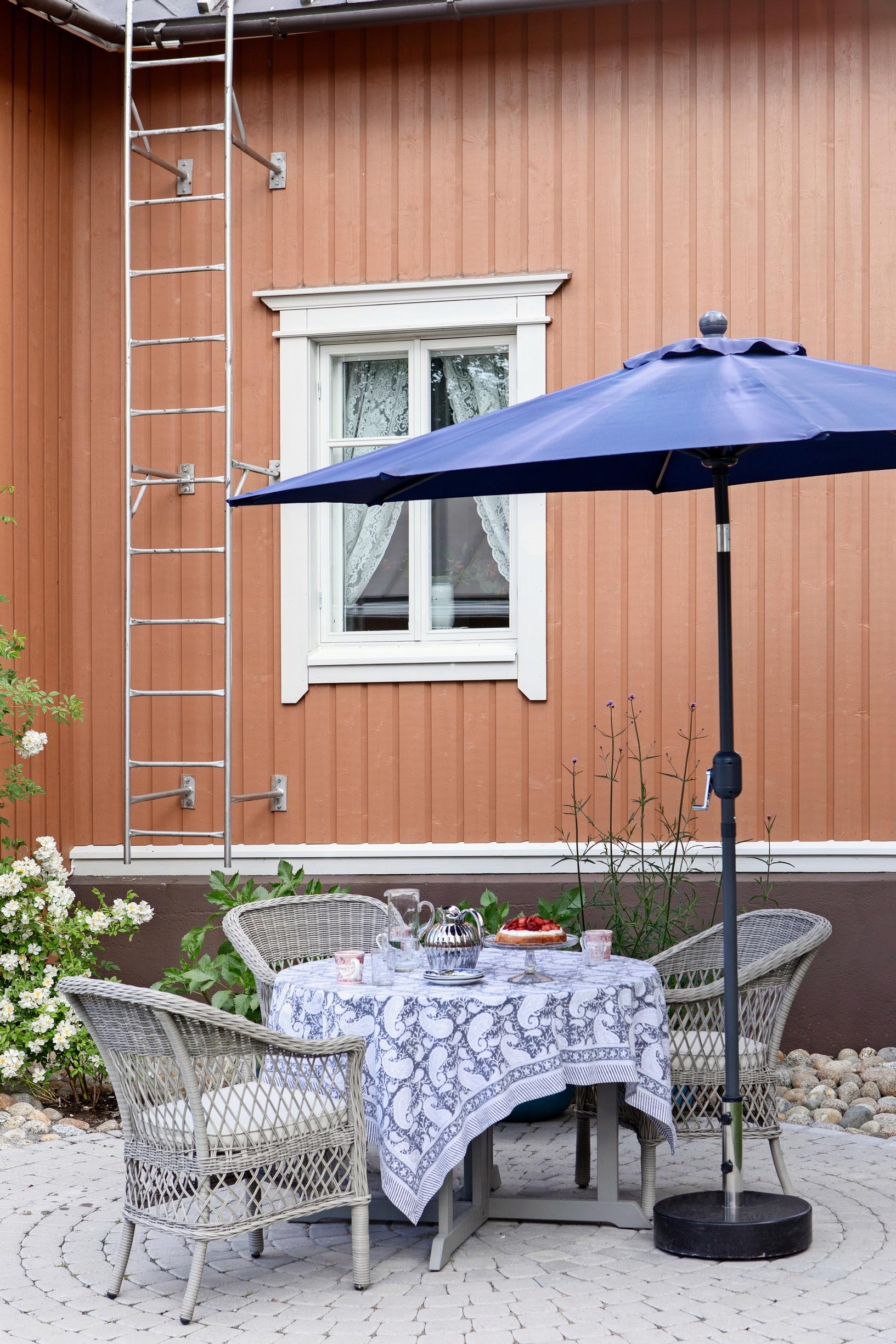
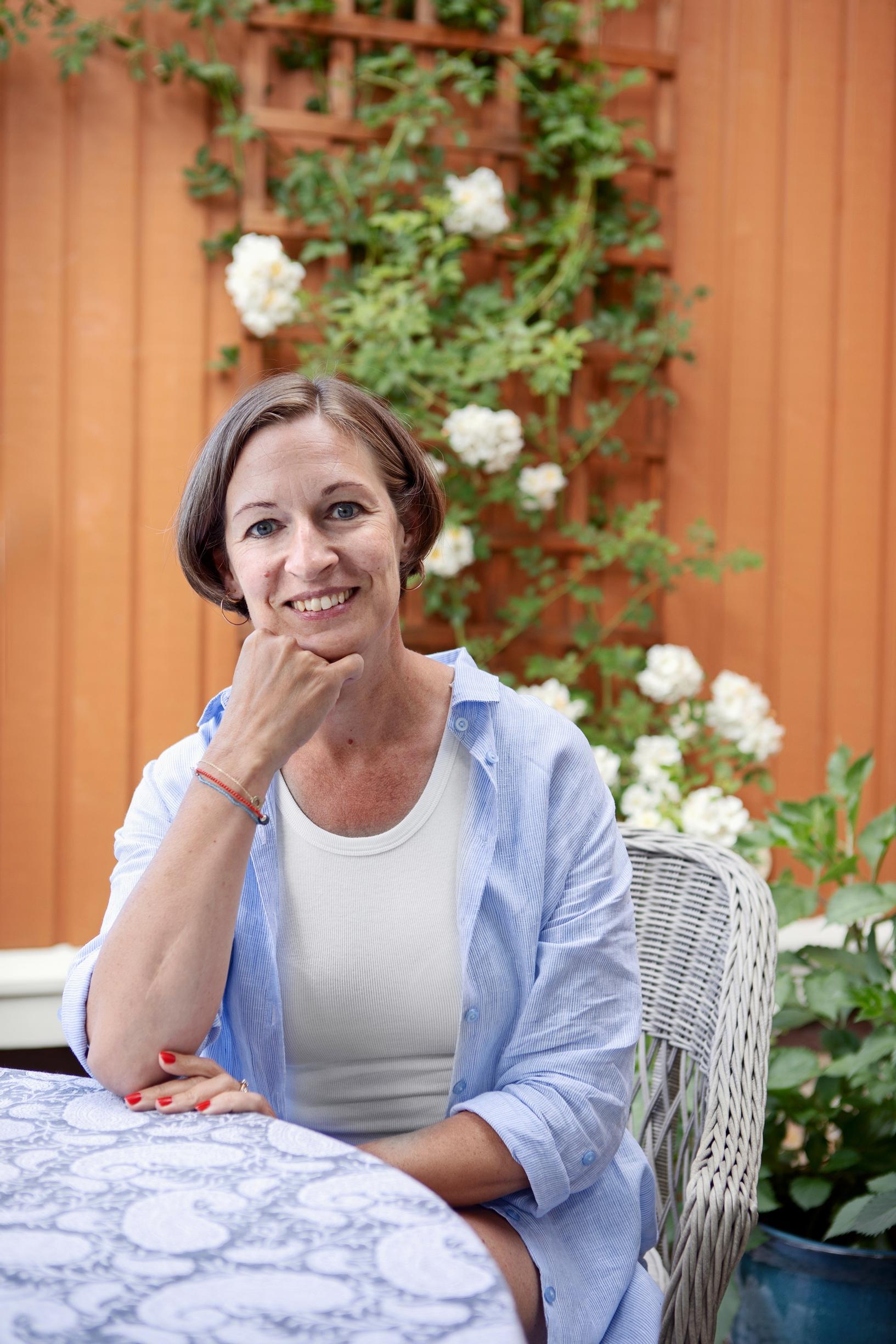
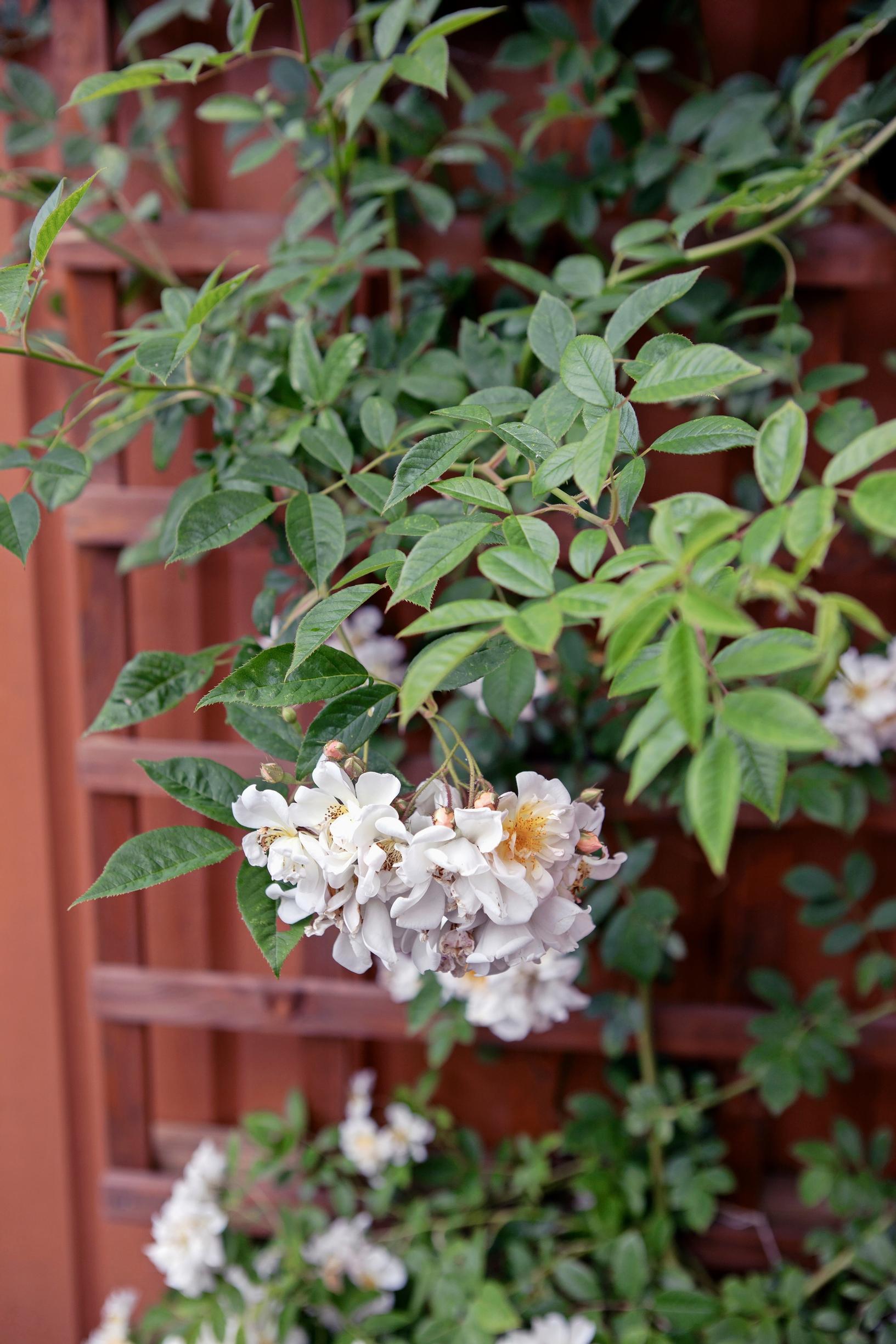
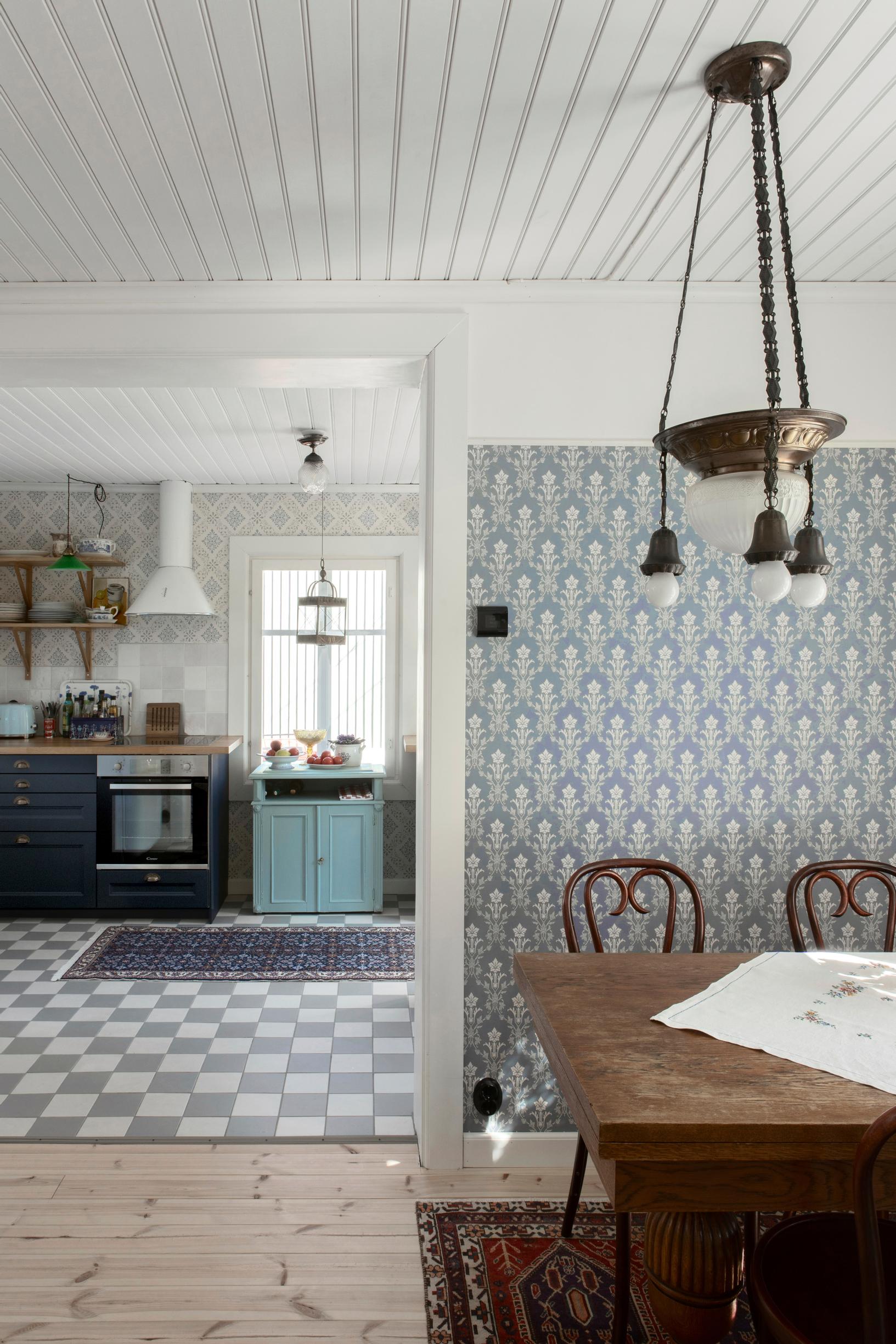
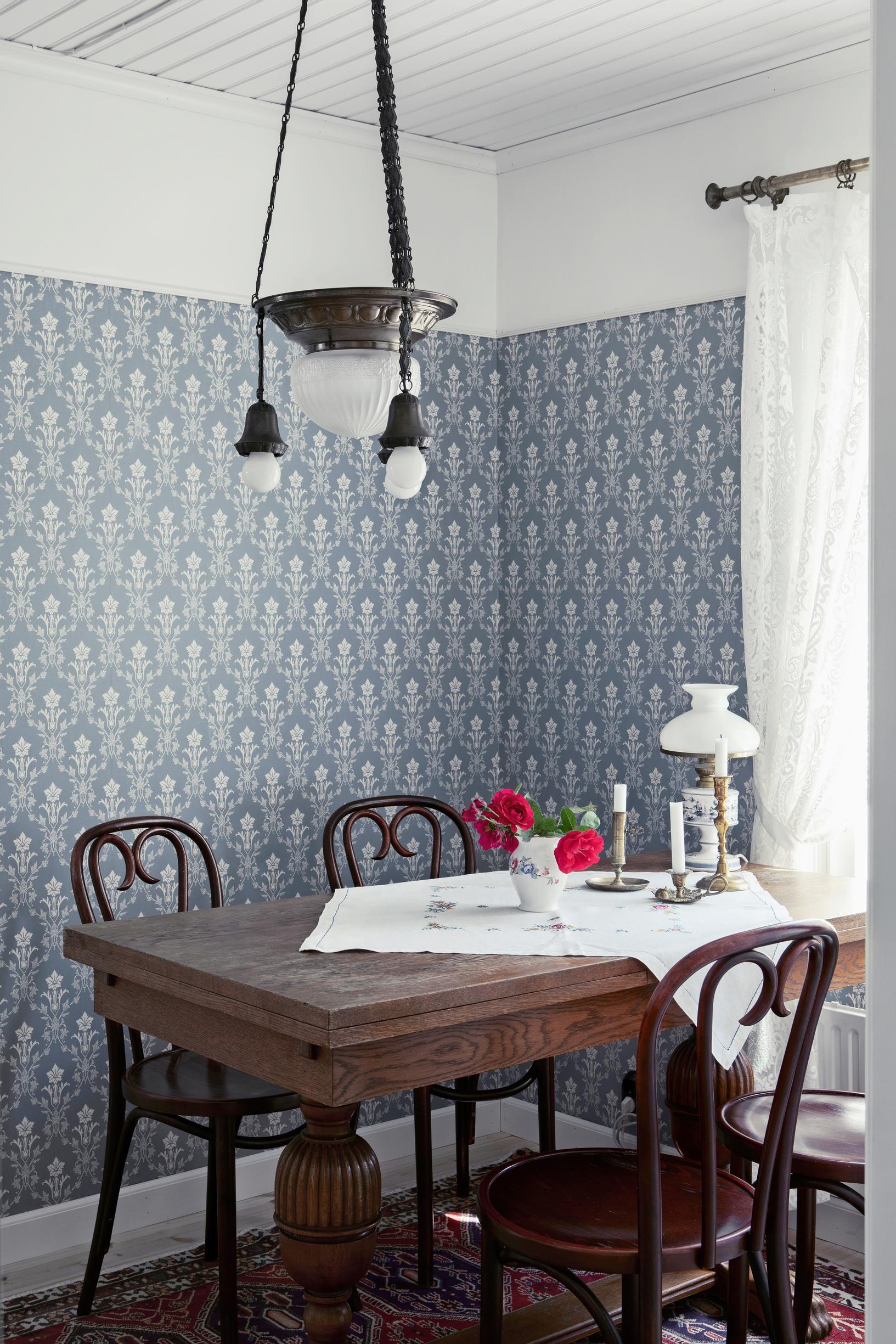
“On the way back from the house showing, I was sitting in a boat heading to our family’s island cabin. Björn is originally from Pietarsaari. The log house in Skata looked charming and was in good shape—an ideal base for us. The previous owner had renewed the exterior and repaired the frame.
“In a log house, you can’t just open up new doorways or remove entire walls.”
During that boat ride, my mind started whirring. Could we fix the two biggest flaws—a confusing floor plan and the steep, ladder-like attic stairs? If we could remove the hallway, we’d have room for safer stairs. But in a log house, you can’t just open up new doorways or remove entire walls. First, we had to find out if the hallway wall was load-bearing.
Björn and I have always loved old houses, even though we’re not exactly handy ourselves. Thankfully, my father, Risto, is an old-school builder. I remember that at the second showing, he came over to me and said solemnly, “Guess what I’d do if I wanted a house like this. I’d buy it.” That meant a lot, coming from him—he’s usually skeptical about any project of mine.
We bought our cottage in 2021, right at the height of the Covid housing boom. People were snapping up single-family homes and cottages left and right. That’s why we named our place Villa Fenomen, or ‘Villa Phenomenon.’
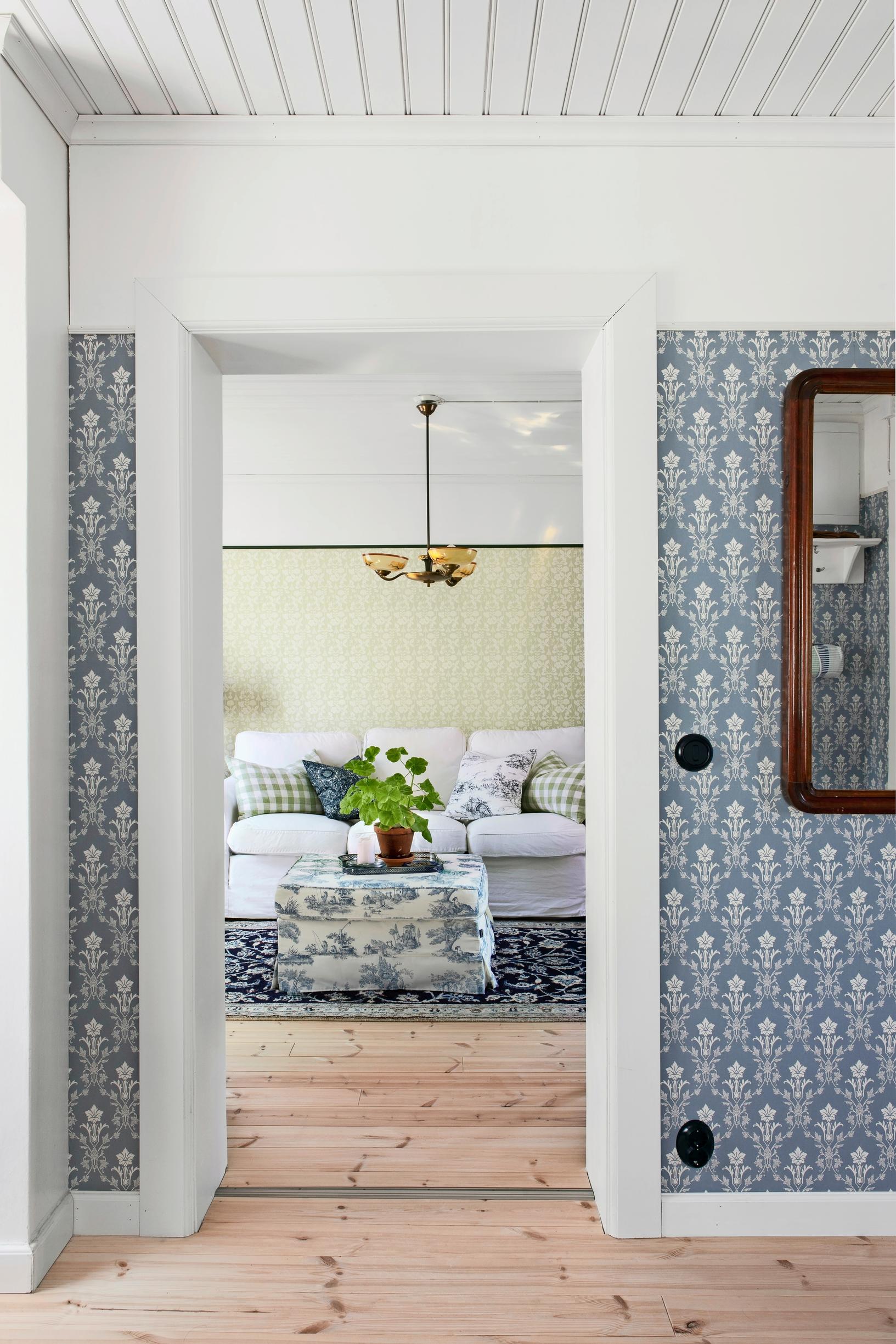
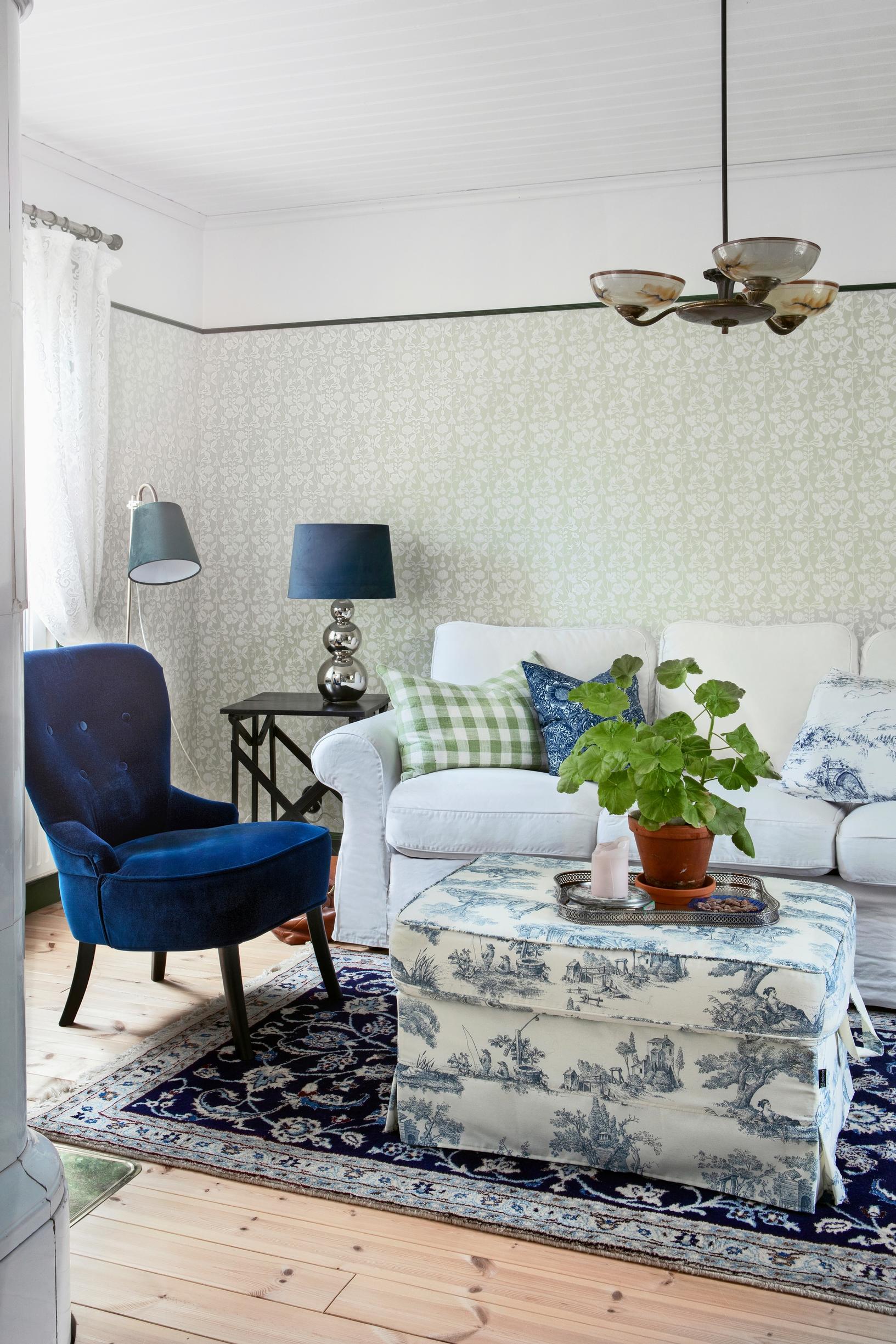
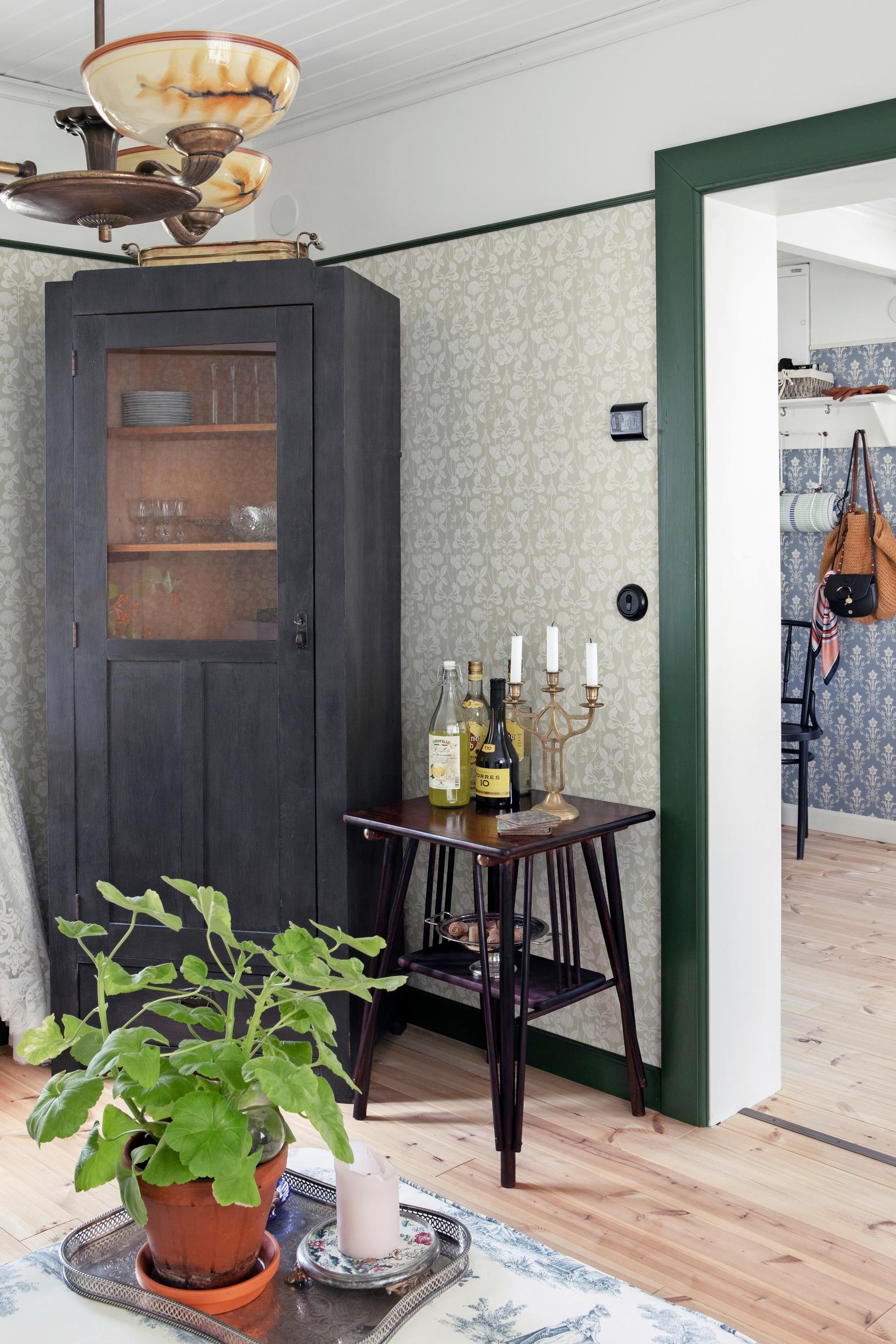
“There were probably originally two families living here, each with rooms at opposite ends of the house.”
All sorts of things happened during the renovation and we had to change our plans along the way. I thought about restoring the old plank floor until I actually started. One afternoon and a quarter of a square meter weeded of nails was enough. Those nails were the last relic of the eight flooring layers on top. The old boards were left beneath the new floor.
We tackled the hallway and staircase amid clouds of dust. After sifting through decades-old insulation—soil, dust, and miscellaneous debris—we found that the hallway wall could indeed be removed.
Later, while stripping wallpaper, we also discovered why there had been a hallway running through the middle of the place. Apparently, two households originally lived here, each occupying the rooms at opposite ends of the home. The shared kitchen was in the center, and the hallway provided access to the entryway and each family’s quarters.
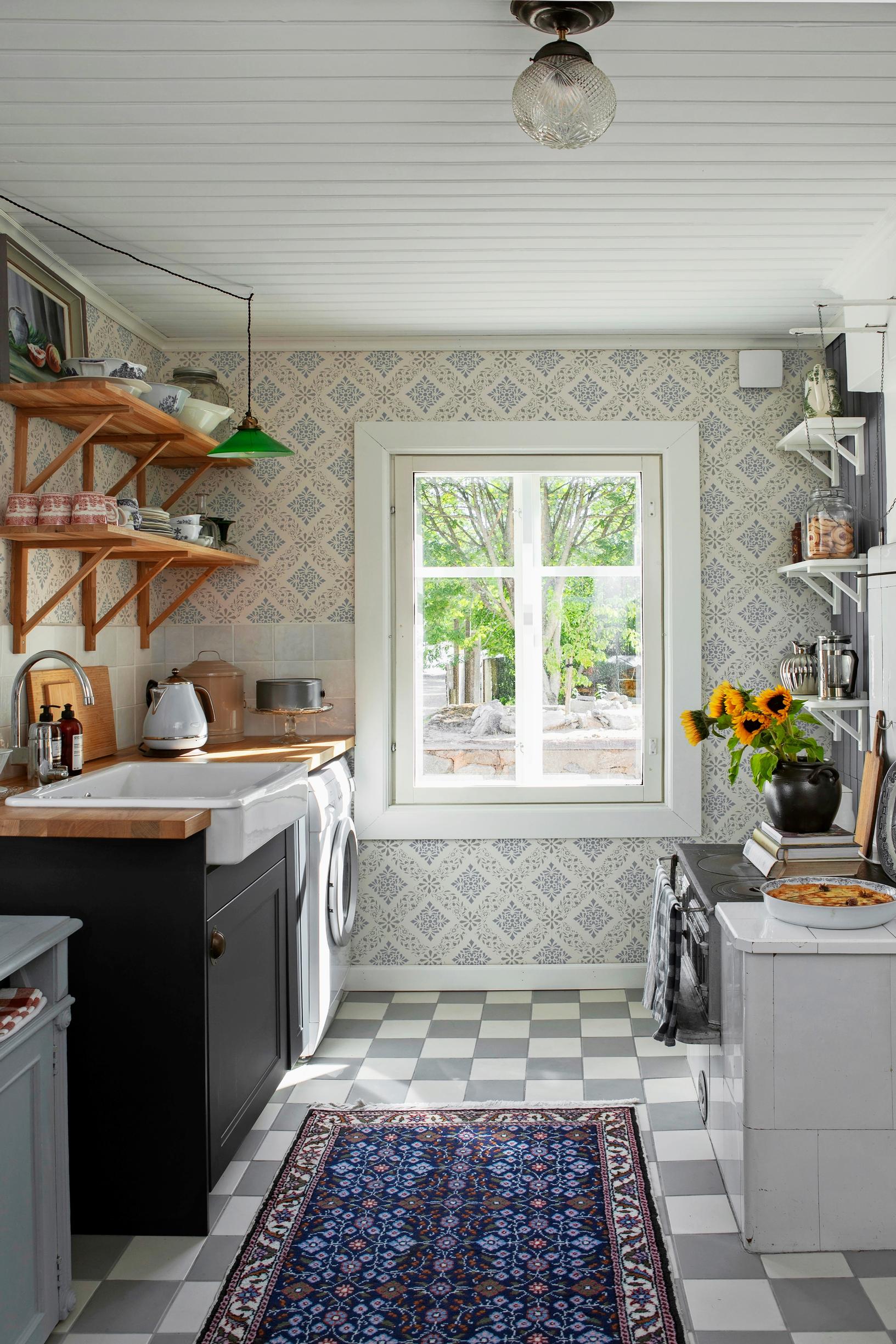
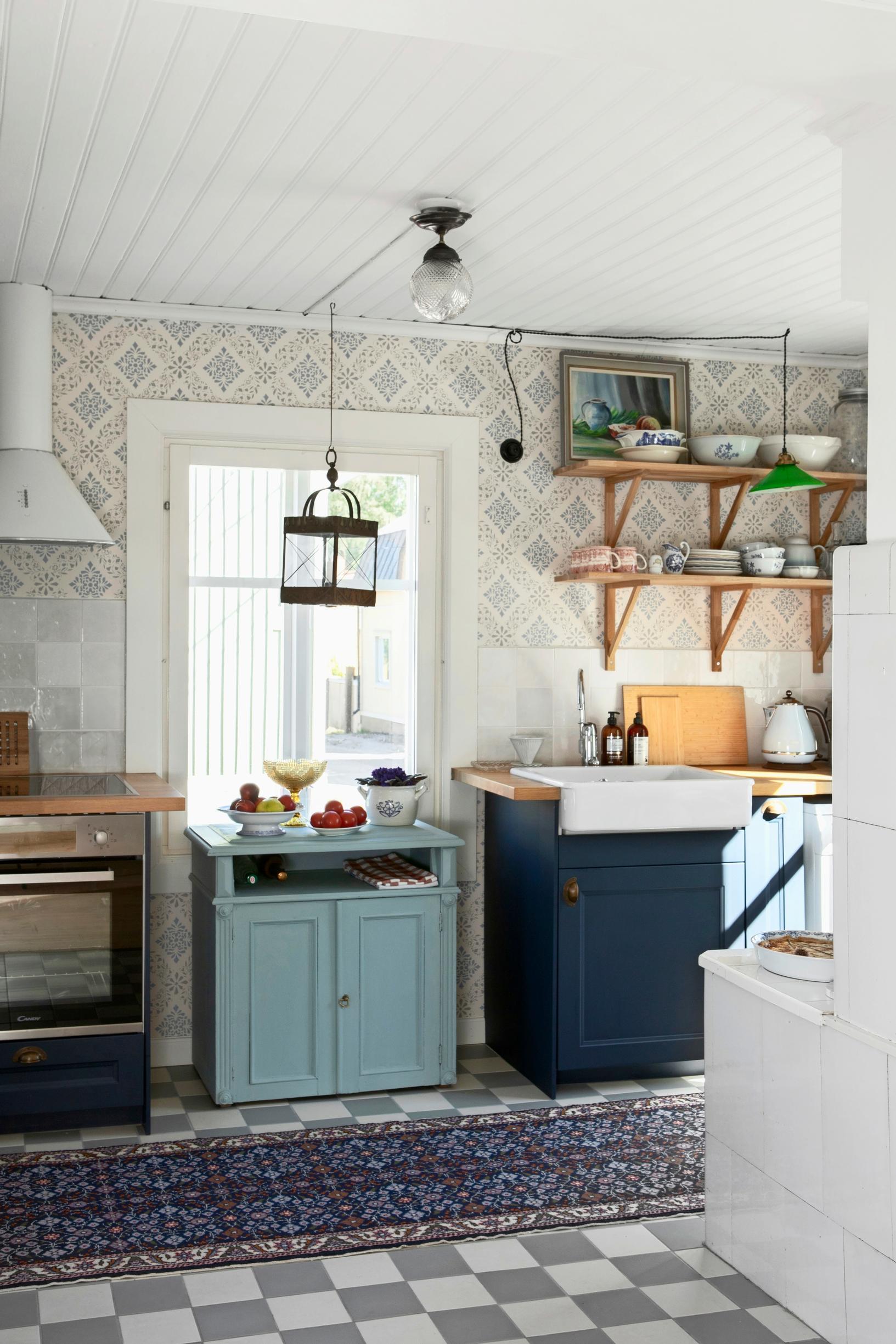
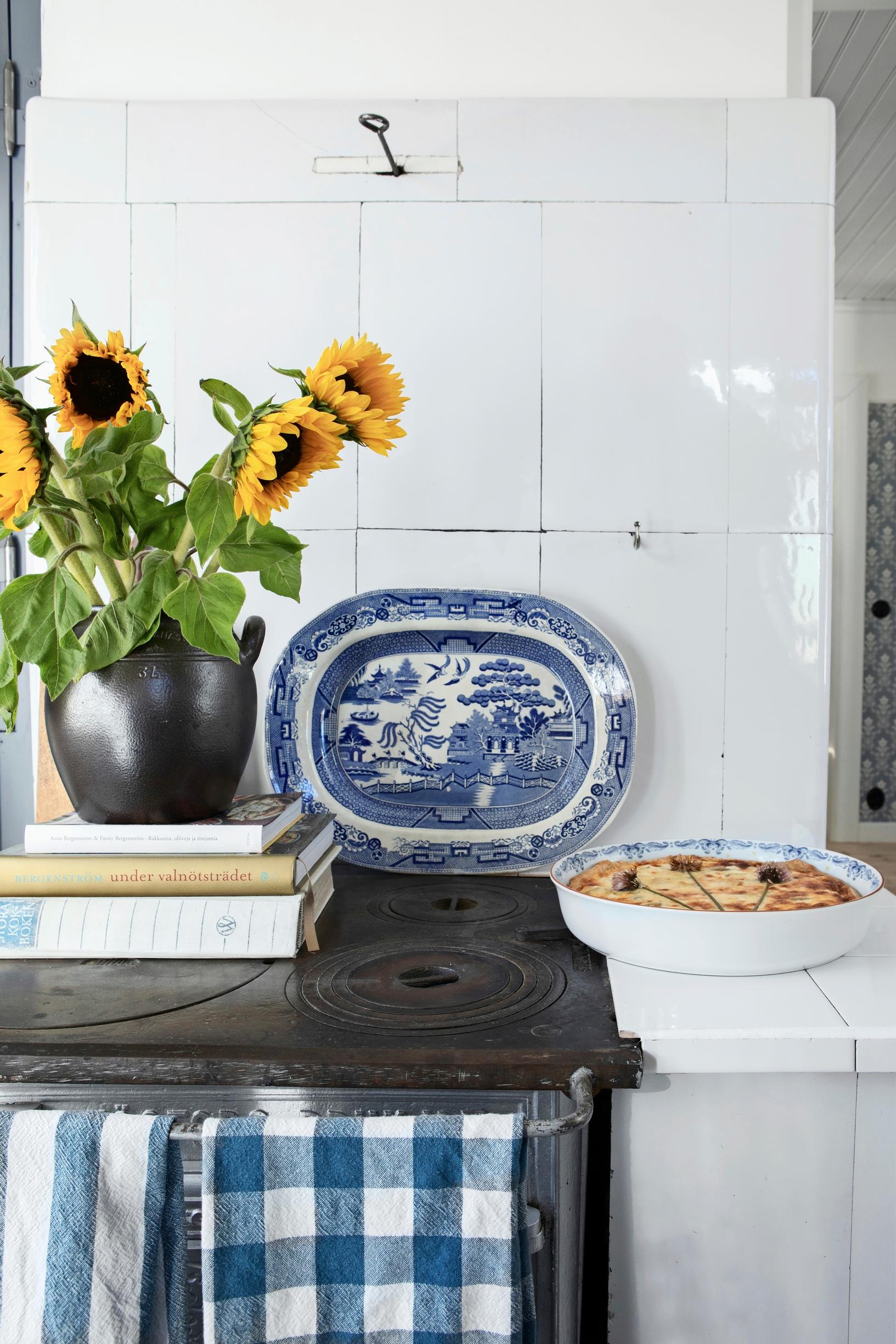
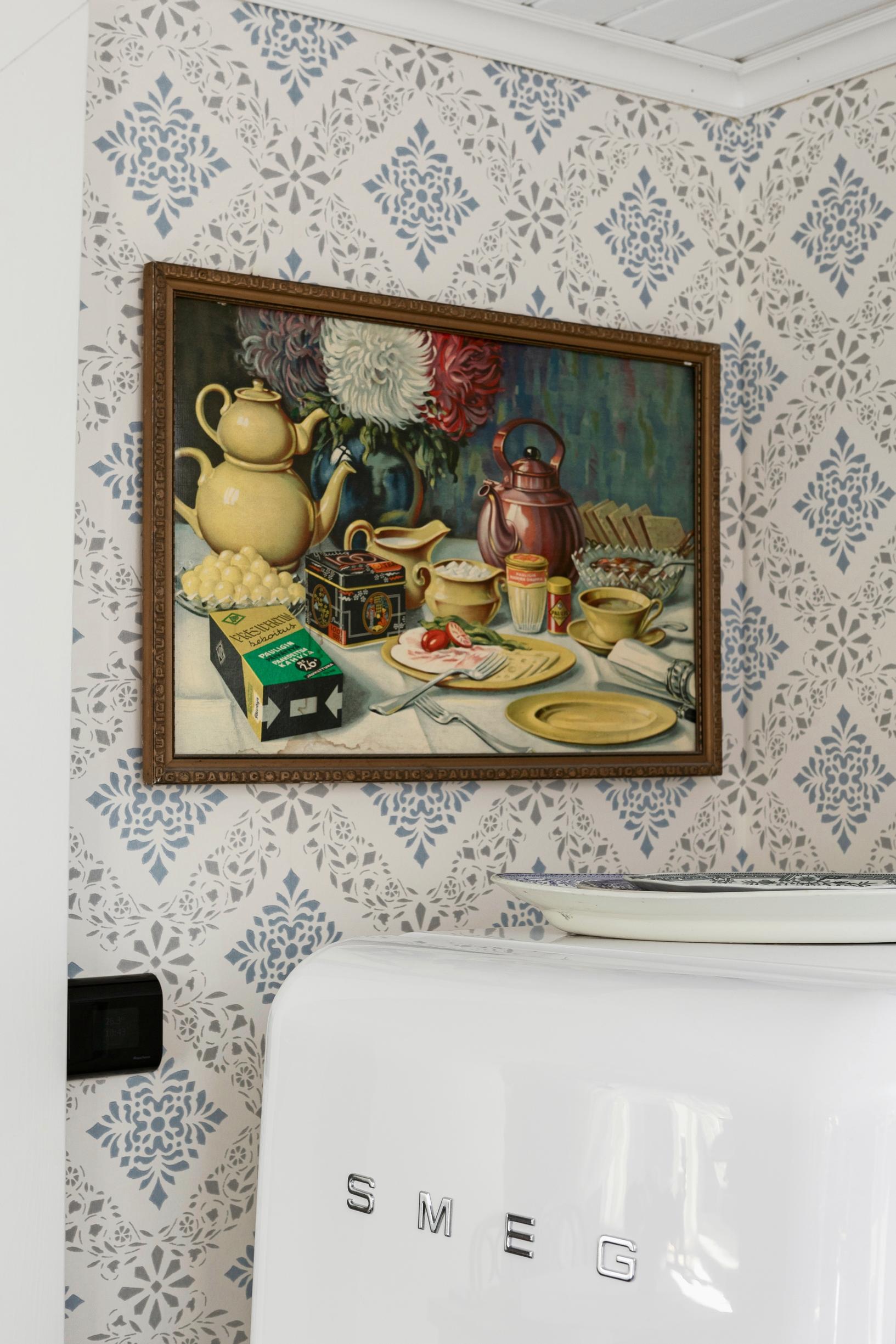
The era when the house was built set the tone for the interior design.
Building the new staircase brought an unexpected twist. We asked a carpenter to take a look, and he wondered how the stairs could have swallowed so much of the bathroom. When demolition started, we realized the old set of stairs had never been removed—someone had just built a new staircase right on top of the original. The cramped 1970s bathroom underneath had barely any wiggle room; you had to back onto the toilet and dodge the sink. Now, the updated bathroom is much more comfortable, and the gently sloping staircase is a relief.
For us, the building era guided our interior style. Aside from the bed and armchairs, our furniture is all vintage. My grandfather built the large cabinet in the living room. Back in the day, he brought that nearly two-meter cabinet home from Strömberg’s workshop on his bike’s luggage rack! We safely carried it to Villa Fenomen in our car’s trunk. It fits this house as though it were made for it.
